Define Data Items for Basic Bridge Definition
You can add data items to the Bridge definition that will be included in the import or export. Each data item added must also be configured to ensure the fields are mapped correctly, the correct data is exported, and the data is exported to the desired location.
Complete the following steps to add and configure data item(s) for import or export from PCS:
-
Open the Bridge definition for which you would like to add data items.
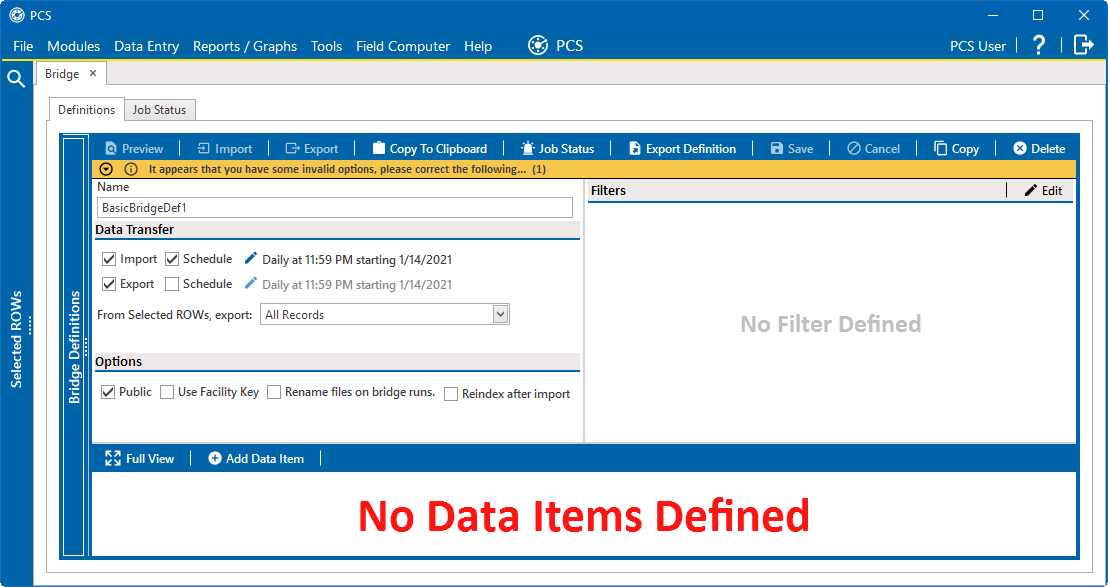
Basic Bridge Definition
-
Click
 Add Data Item to open the Data Items window.
Add Data Item to open the Data Items window.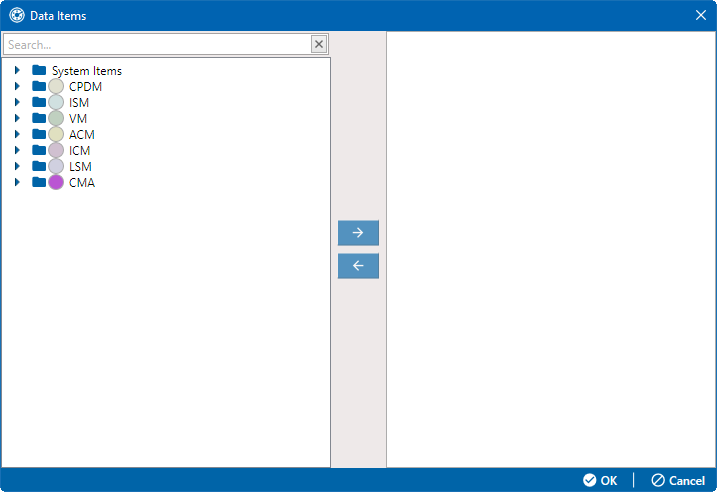
Data Items Window
-
Navigate to the folder(s) containing the data item(s) you want to import or export. Click the
 icon next to a top-level folder to expand it.
icon next to a top-level folder to expand it. -
Select a data item and click the
 button to move it to the right pane of the window. You can also double-click an item to move it.
button to move it to the right pane of the window. You can also double-click an item to move it. 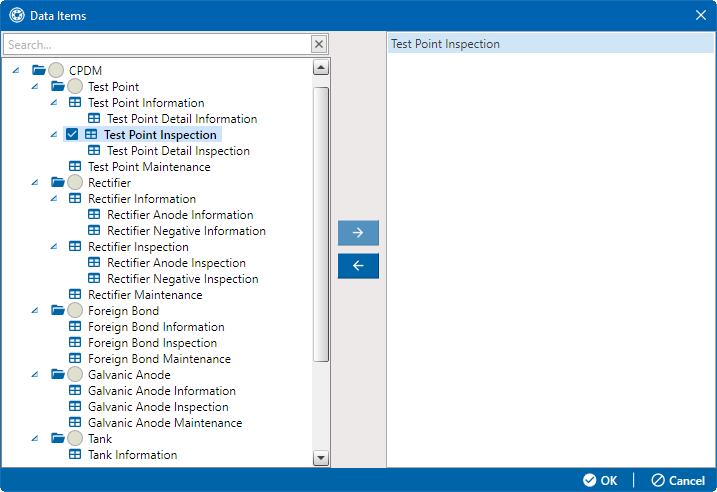
Data Items
The right pane of the Data Items window lists all selected data items for import or export. To remove a data item, select it and then click the
 button to move it back to the left pane. You can also double-click an item to move it.
button to move it back to the left pane. You can also double-click an item to move it. -
Repeat these steps as needed until all desired data items are listed in the right pane.
-
Click
 OK to close the window and return to the Bridge definition window. The data items are shown on the left side of the lower pane of the Bridge Definition window. You can click
OK to close the window and return to the Bridge definition window. The data items are shown on the left side of the lower pane of the Bridge Definition window. You can click  Full View to view just this area. Click
Full View to view just this area. Click  Full View again to expand the view.
Full View again to expand the view.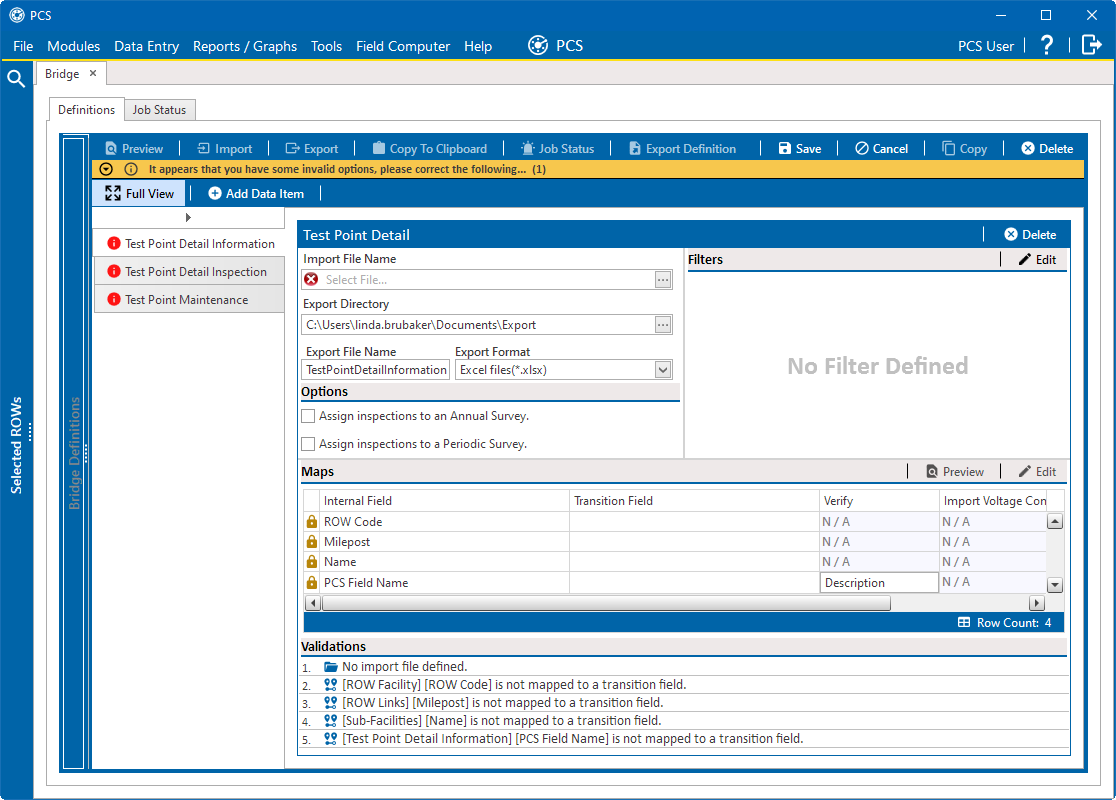
Data Items Pane
-
To delete a data item, click select the data item in the left-hand list and click
 Delete in the associated Detail pane.
Delete in the associated Detail pane.
Data Item Details Pane
-
To configure each data item, select the data item and complete the following steps for each one. The name of the data item will display as the header of the configuration pane:
-
For Bridge imports, select an import file in Import File Name field. Click the ellipsis button … in the Import File Name field to open the Import File window. Navigate to a folder on your computer where you want to save the export file. Then click Open to close the window and return to the definition window.
If you did not select Export in the Data Transfer pane, the Export Directory, Export File Name, and Export Format fields will not display.
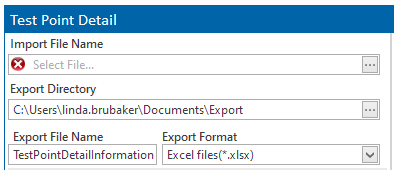
Data Item Import and Export Information
-
For Bridge exports, select an Export Directory, enter an Export File Name, and select a Export Format for the export file. Options include Excel files (*.xlsx) and Text files (*.txt, *.csv). Click the ellipsis button … in the Export Directory field to open the Browse For Folder window. Navigate to a folder on your computer where you want to save the export file. Then click OK to close the window and return to the definition window.
-
-
To assign inspections to an annual survey folder based on the inspection date of the record, select the Assign inspections to an Annual Survey check box.

Data Items Options
-
To assign inspections to a periodic survey folder based on the inspection date of the record, select the Assign inspections to a Periodic Survey check box.
-
Apply a filter to the data item. You can set up one or more filters that are applied to only the currently selected data item in the export definition. If the export definition is set up to run at a scheduled time, the filters will apply automatically. However, if an export definition is run manually, you will be prompted to select which filters to apply before running the export definition.
Click
 Edit in the Filters pane and define the filters that apply to the selected data item in the Edit Filters window. For detailed information about editing filters, refer to Set Filters for All or Selected Data Items.
Edit in the Filters pane and define the filters that apply to the selected data item in the Edit Filters window. For detailed information about editing filters, refer to Set Filters for All or Selected Data Items.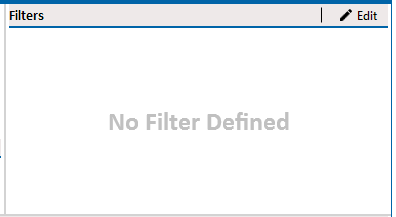
Filters Pane
-
Map PCS fields to transition field in the Maps pane.

Maps Pane
-
Click
 Edit to open a field selection window.
Edit to open a field selection window.
Edit Map Window
-
Click
 Auto Map to allow PCS to map PCS fields with fields from the import file based on column names. The Transition Field cell for the mapped Internal Field will auto-populate.
Auto Map to allow PCS to map PCS fields with fields from the import file based on column names. The Transition Field cell for the mapped Internal Field will auto-populate.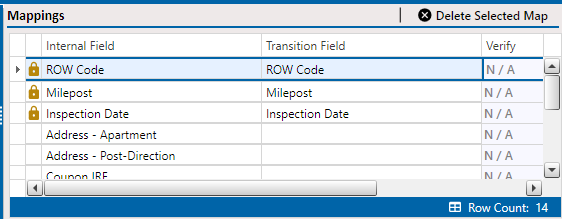
Transition Field Mapped
-
If the PCS field(s) you wish to map to data in a column of the imported file or to export to a file is not listed in the Mappings pane, navigate to and select the PCS fields in the Internal Fields pane and click the
 button or double-click the field(s) to move the selected fields to the Mappings pane.
button or double-click the field(s) to move the selected fields to the Mappings pane. -
For Bridge exports, select a row in the Mappings pane and type a column name in the Transition Field cell.
For Bridge imports, locate the corresponding column name in the Transition Fields pane and click the
 button or double-click the field to map the selected fields.
button or double-click the field to map the selected fields. -
If the Choose a conversion.. field is present in the Mappings pane for one or more mapped fields and you want to apply a conversion option, click the Choose a conversion .. field and select an option in the resulting list.
-
To remove a field in the Mappings pane, double-click the field and then click
 Yes in the Warning window.
Yes in the Warning window.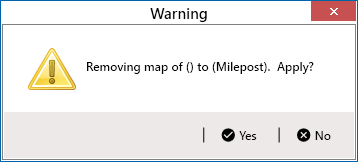
Warning Message to Delete Map
Fields with a
 lock icon are required and should not be removed, such as ROW Code, Milepost, Facility ID, and Inspection Date.
lock icon are required and should not be removed, such as ROW Code, Milepost, Facility ID, and Inspection Date. -
Click
 Preview to view how the data in the import file would map with the configured mappings. Click
Preview to view how the data in the import file would map with the configured mappings. Click  Close to close the preview window.
Close to close the preview window.You can also click
 Preview from the pane of the Definitions window to view the Preview Maps window. Click
Preview from the pane of the Definitions window to view the Preview Maps window. Click  Close to close the window.
Close to close the window.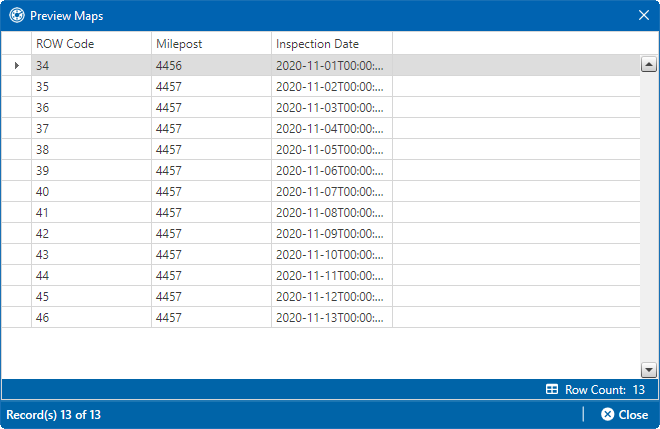
Preview Maps Window
-
-
Click
 OK to close the field selection window and return to the definition window.
OK to close the field selection window and return to the definition window. -
View whether the data item is valid or not in the Validations pane. Valid data items will have the message <data item> is Valid in green in this pane.
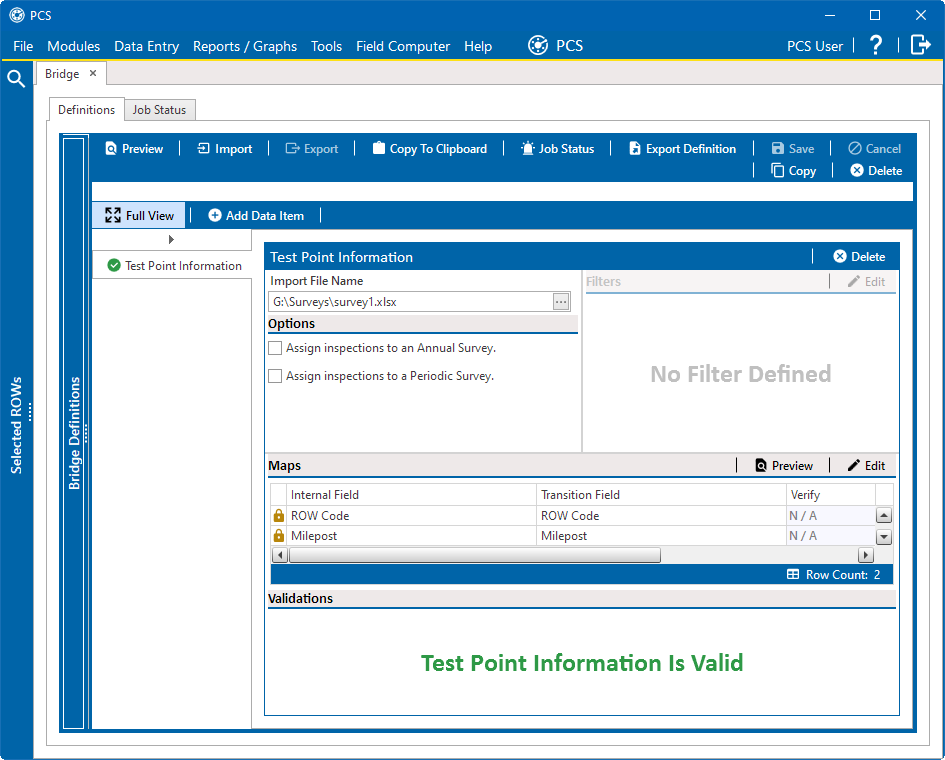
Validations for Data Items
-
Correct any problems shown in the Validations pane before continuing. Examples may include the following:

Validations Pane with Actions Required
Click ![]() Save to save changes to the definition.
Save to save changes to the definition.